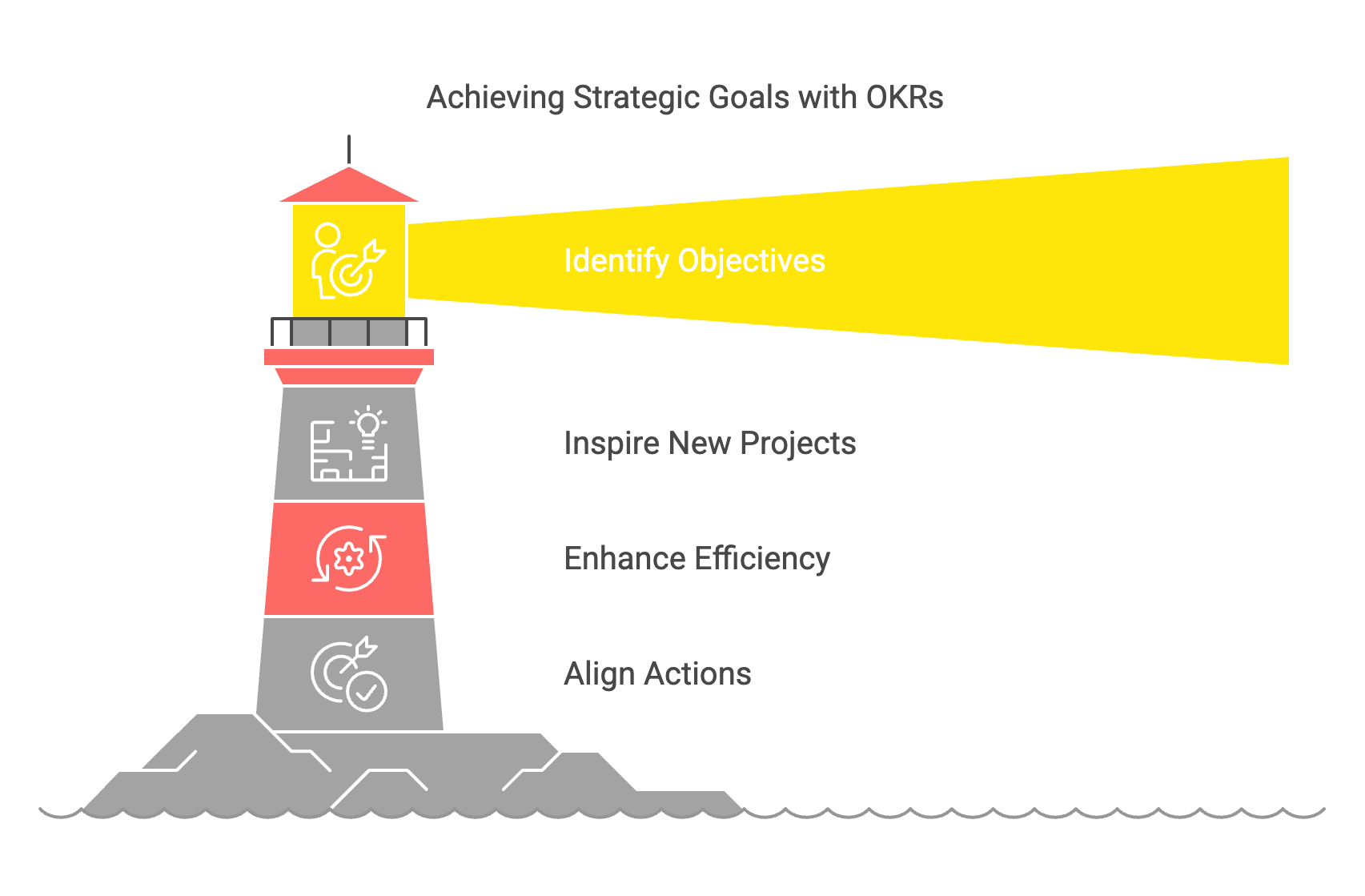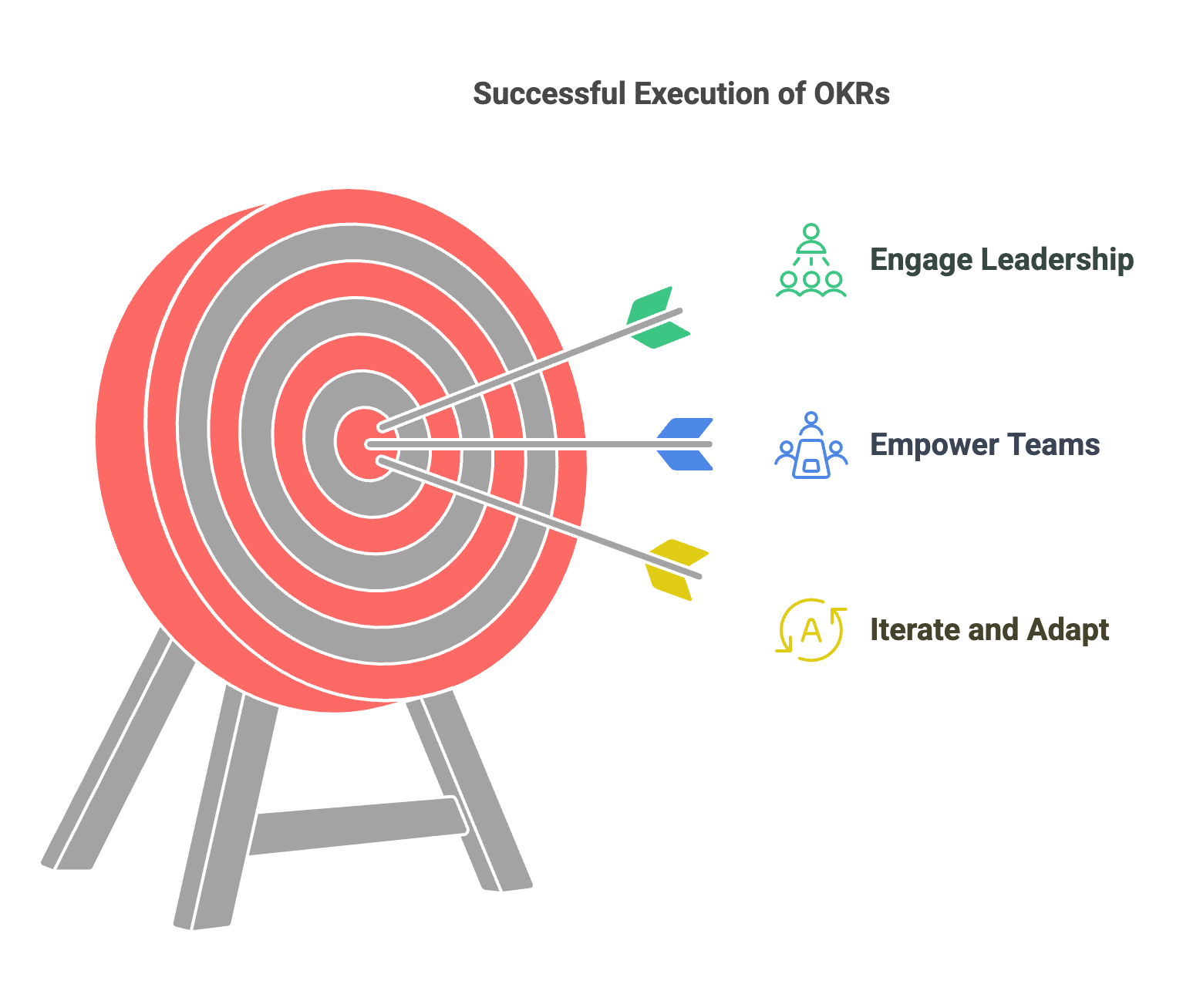In order to fulfill organizational ambitions and maintain a competitive advantage, a strategic framework is crucial. This is where OKRs (Objectives and Key Results) come into play, a dynamic method that has gained significant traction for goal establishment and assessment. However, crafting OKRs is merely the starting point. This article investigates how organizations can adeptly transform their OKRs into tangible actions, which could lead to the initiation of new projects or enhancements in their operations.
What are OKRs, and why are they so important?
OKRs are a goal-setting framework that provides a structured way to define and measure objectives and their corresponding key results. They offer clarity, focus, and alignment throughout an organization, ensuring everyone works towards common goals. OKRs are important because they help organizations:
Enhance Focus: By setting clear objectives, teams can prioritize their efforts on what truly matters.
Improve Alignment: OKRs align the efforts of individuals, teams, and departments with the organization's overall strategy.
Drive Accountability: Key results provide measurable outcomes, holding teams accountable for their performance.
Defining Clear Objectives and Key Results
Successful execution of OKRs starts with defining clear objectives and key results. Objectives should be ambitious, inspirational, and directly tied to the organization's mission. Key results, on the other hand, should be specific, measurable, achievable, relevant, and time-bound (SMART). It's essential to involve key stakeholders in this process to ensure alignment and buy-in.
From OKRs to Tangible Actions
Implementing New Projects
One of the most exciting aspects of OKRs is their ability to inspire new initiatives and projects. When an objective requires a significant leap forward, it often leads to the creation of new projects. These projects become the means to achieve the defined key results. Project managers play a crucial role in planning, executing, and monitoring these projects to ensure they align with the organization's OKRs.
Enhancing Operational Efficiency
Not all OKRs require the launch of new projects. Some objectives may revolve around optimizing existing processes or improving operational efficiency. In such cases, actions involve analyzing current workflows, identifying bottlenecks, and implementing changes to streamline operations. This approach ensures that even routine tasks contribute to the achievement of strategic goals.
Remember, the path from OKRs to actions starts with a clear plan. Download our Free OKR Template now and begin your journey towards turning objectives into impactful results.
By taking advantage of this resource, you'll not only define your goals but also map out the actions needed to reach them. Don't miss this opportunity to supercharge your organizational success!

Effective OKR Tracking and Monitoring
To ensure the successful execution of OKRs and actions, regular tracking and monitoring are essential. Organizations can use Key Performance Indicators (KPIs) to measure progress towards key results. Tools and software can help automate data collection and reporting, making it easier to identify areas that need attention. Frequent check-ins and status updates help teams stay aligned and agile in responding to challenges.
Tips and Recommendations for Successful Execution
- Engage Leadership: Ensure top-level support and commitment to OKRs and actions. Leaders should actively participate in the goal-setting process.
- Empower Teams: Encourage teams to take ownership of their OKRs and actions. When employees feel responsible for their goals, they're more motivated to achieve them.
- Iterate and Adapt: OKRs and actions may need adjustments as circumstances change. Be flexible and open to adapting your plans.

Key Takeaways
In summary, OKRs are a powerful tool for setting and achieving objectives in organizations. However, their true value is unlocked when they are transformed into actionable plans. Whether through the launch of new projects or operational improvements, organizations can leverage OKRs to drive success. Regular monitoring, leadership involvement, and an empowered workforce are key factors in turning OKRs into tangible results.
By combining OKRs with actionable insights, organizations can effectively bridge the gap between setting objectives and achieving them, ultimately driving innovation and succes.